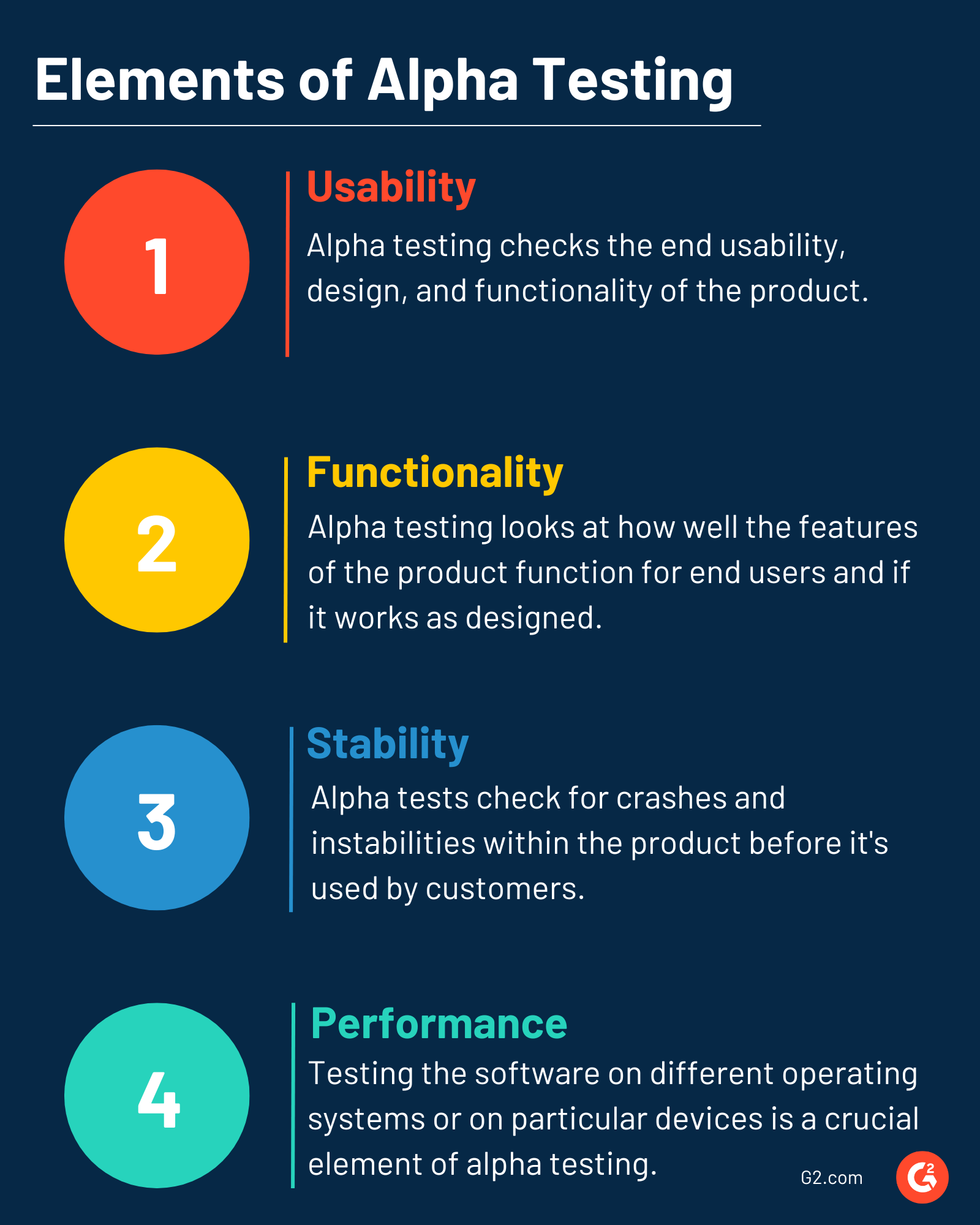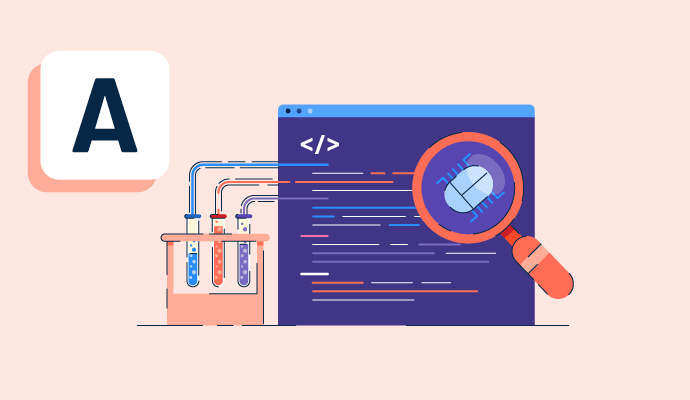What is an alpha test?
An alpha test is the first testing phase during product and software development. During this phase, the goal is to review the quality of the product and identify any bugs before the software is released to customers.
This type of testing is usually conducted by internal employees in a lab or staged environment, typically when the product is 75-90% complete. All major features must be present before alpha testing to ensure the core components work correctly.
Using software testing tools to complete alpha tests, teams determine whether the product is in a usable state. This helps decide if the product is ready to move forward to customers in a beta test, where customer satisfaction and feedback notes are gathered.
Types of alpha test
What kind of alpha test is run will depend on the product or software being tested, as not all types work with every possible product. The main types of alpha testing are:
- Smoke testing, also called functionality testing, is a type of alpha test that looks at the basic workability of the product or software. This can also be run post-launch if new features are added or updated.
- Integration testing is helpful if the software needs to work with other tools. An integration test is necessary to ensure all core components work well together without stability or compatibility issues.
- UI testing focuses on how the software looks and works for an end user. Any tutorials created for customers are also tested to ensure they’re correct.
- Sanity testing involves looking for and fixing bugs, which a software developer always works on. With this type of alpha test, identifying and correcting bugs is the primary goal.
- Regression testing is similar to sanity tests, which checks older software versions to look for updates and verify that the new components are working properly.
Basic elements of alpha tests
Several critical areas are assessed during an alpha test to determine if a product or software is working as expected.

These include:
- Usability: As customers will be the primary users upon launch, it’s crucial that alpha testing checks the end usability of the product. The design and functionality are both included in this part of the test.
- Functionality: The ultimate aim of an alpha test is to be sure that the product or software works as designed, alone and in conjunction with other software. Alpha testing must look at how well the features of the product function for end users end users
- Stability: Stability is also a feature of beta testing. Alpha tests must check for any crashes or potential instabilities within the product before rolling it out to customers.
- Performance: Testing the software on different operating systems or on particular devices is an important part of alpha testing. This gives teams an opportunity to correct any errors that could be resulting from condition challenges rather than inherent problems with the software itself.
Benefits of alpha tests
Testing at all stages of development are beneficial, but running an alpha test ahead of giving customers a first look is especially useful. Some of the benefits of alpha testing are:
- Understanding crucial insights: Software developers can easily become too focused on the small details of a product. Alpha testing gives teams further insight into whether or not the software is working as expected as a whole and how users may engage with the program once launched.
- Developing higher quality software: A broader view of the software during alpha testing means that errors can be quickly identified and fixed before customers ever see the software.
- Saving money: Undetected errors can become costly to fix once a product has been released to the market. While alpha testing takes time, it ultimately becomes more cost effective long term by giving developers a chance to address issues before they become more complex and costly to fix.
-
Delivering the final product faster: With errors identified and preemptive bug patches installed as a result of alpha testing, software can often be released faster and with better usability.
Best practices for alpha tests
To ensure a successful alpha test, there are several best practices that developers should aim to implement. These include:
- Reporting any bugs: Small bugs may be easy to fix but that doesn’t mean they should be unreported. Anything that could cause an issue should be noted, especially anything that could come up during beta tests or once the product has launched. Any users who reported the bug should also test the fix.
- Testing the full user experience: Users won’t be experiencing individual components in the software but the whole product. It’s crucial that the beginning to end of the user experience is reviewed thoroughly during alpha testing to better understand possible issues from the customer perspective.
- Having non-technical team members test: Developers should work on the initial stages of alpha testing due to their abilities to uncover bugs or glitches. But it’s important to include non-technical staff, too, particularly for user experience testing. They can also provide insight into how well the product aligns with overall sales and marketing goals for the business.
- Reviewing any app specifications: Before the test begins, any specifications around integrated apps should have been considered. This should include both functional and non-functional requirements, like product features and user requirements, along with customer expectations of the software.
- Establishing a consensus for the end of the test: Once the test is over, the team should agree on whether another alpha test is needed following fixes or if the software is ready to move into beta testing with real users. Establish firm success metrics to decide if those fixes have been a success.
Run and manage software testing internally using test management tools that turn alpha test results into actionable tasks.

Holly Landis
Holly Landis is a freelance writer for G2. She also specializes in being a digital marketing consultant, focusing in on-page SEO, copy, and content writing. She works with SMEs and creative businesses that want to be more intentional with their digital strategies and grow organically on channels they own. As a Brit now living in the USA, you'll usually find her drinking copious amounts of tea in her cherished Anne Boleyn mug while watching endless reruns of Parks and Rec.
